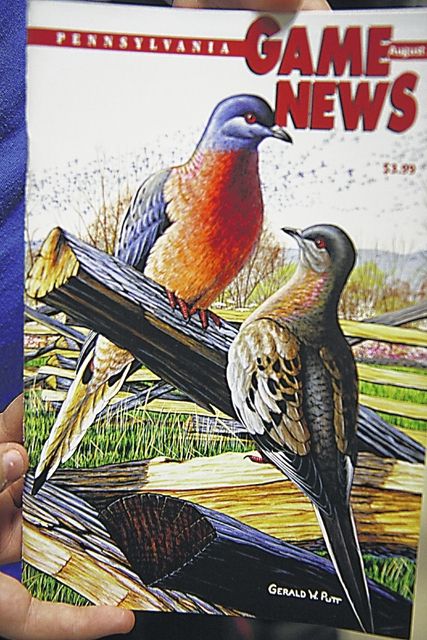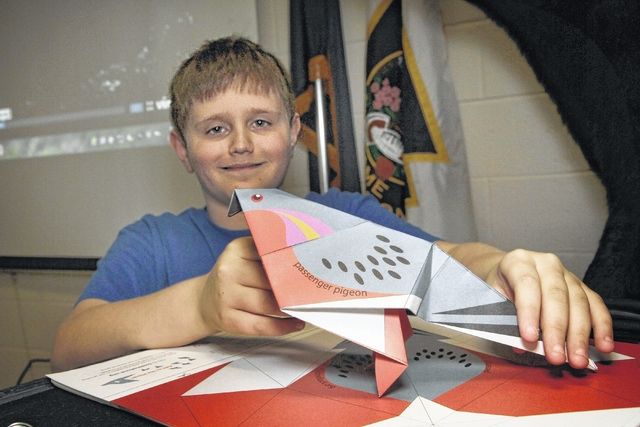Click here to subscribe today or Login.
Bill Williams interjected humor throughout his presentation on the passenger pigeon on Thursday at the Pennsylvania Game Commission region office in Dallas.
But at the conclusion of the program, Williams’ message about a species that became extinct was serious.
“This is a cautionary tale. It’s important to teach our future generations about extinction. If we don’t, more species could disappear like the passenger pigeon,” he said.
Williams, who is the information and education supervisor for the PGC’s Northeast Region, kicked off his summer series of wildlife programs with a species that no longer inhabits the state. The passenger pigeon at one time numbered in the billions, but it began to decline in 1860 and by 1914, the last bird died in the Cincinnati Zoo.
The largest concentrations of passenger pigeons were in Michigan, Wisconsin and Pennsylvania and the populations numbered nearly six billion when colonists first arrived, Williams said. Flocks of several million birds masked the sun as they flew for days in some cases. One flock in Kentucky was estimated to be one mile wide and 240 miles in length.
“Despite these numbers, in a span of 40 years the species was wiped out,” Williams said.
The passenger pigeon was, at one time, common in the region. North Mountain near Ricketts Glen – which is now State Game Lands 66, was home to a nesting area encompassing 13,500 acres. In Forksville, Sullivan County, a spring snowfall in April 1868 killed so many passenger pigeons that the carcasses covered the ground for miles, according to historical accounts.
The last flock passed through the area, in Forksville, in 1886.
So what caused the demise?
Williams listed several factors.
He said passenger pigeons only laid one egg per year, so they didn’t reproduce at a high rate. The birds also ate mast as their primary diet, and some years that could be hard to find.
But perhaps the biggest cause behind the demise of the passenger pigeon was exploitation. The birds and even their young, called squabs, were hunted excessively for decades. There were no laws to protect them and at one time there were professional hunters who killed passenger pigeons and shipped them back to cities.
“They pursued passenger pigeons year round,” Williams said. “Even when people began noticing the decline, passenger pigeons were still shot and killed until the very end.”
The story of the passenger struck those in attendance, including 14-year-old Jay Sims of Luzerne.
“It was interesting how a species that was common could be gone in such a short amount of time,” Sims said. “I learned that it’s important to not take things in large numbers. There needs to be limits.”
Austin Dixon, 15, of Exeter, said it’s hard to imagine a species that numbered in the billions disappearing into extinction.
“I never heard of the passenger pigeon before. But I learned what caused them to go extinct and how the building of the railroad hurt them because hunters could find the flocks and ship the birds back to market,” he said. “There should’ve been laws to protect them.”






